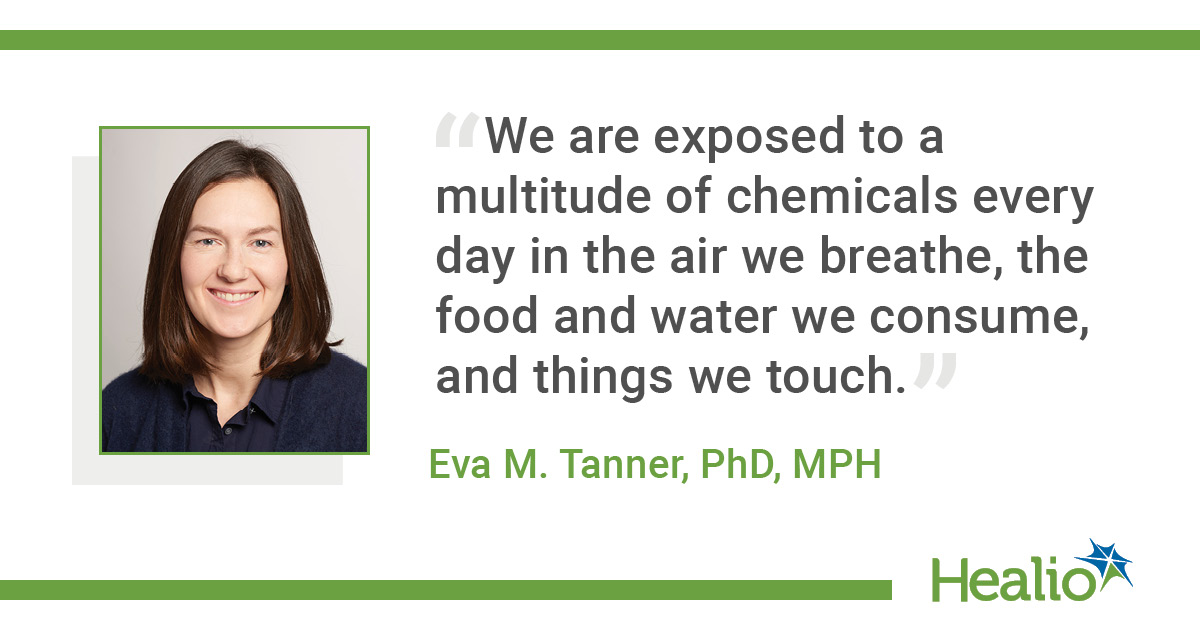‘Message worth repeating’: Maternal exposure to household products can impact offspring IQ

Children who are exposed to chemicals in the womb may face a range of neurodevelopmental and other health risks as they mature. For example, new research shows that prenatal exposure to common household products can negatively impact a child’s IQ.
The findings are “in line with previous research but the message from them is worth repeating,” Nathaniel DeNicola, MD, an assistant professor of obstetrics and gynecology at The George Washington University who was not affiliated with the study, told Healio Primary Care.
One of the study’s authors, Eva M. Tanner, PhD, MPH, told Healio Primary Care that her team looked at the negative consequences of chemical combinations, whereas previous studies did not.
“Most prior research on health risks from chemical exposure study one chemical at a time,” said Tanner, a postdoctoral researcher in the department of environmental medicine and public health at the Icahn School of Medicine at Mount Sinai. “However, we are exposed to a multitude of chemicals every day in the air we breathe, the food and water we consume, and things we touch. Unfortunately, we don’t know how such single chemicals act in complicated mixtures and impact our health, or the health of future generations.”

‘Chemicals of concern’
Tanner and colleagues looked for 26 endocrine-disrupting chemicals in the urine or blood of 718 pregnant women who were in their first trimester. At age 7 years, the children of these women had their IQs tested using the Wechsler Intelligence Scale for Children. The researchers used weighted quantile sum (WQS) regression to assess the association between maternal levels of the 26 chemicals and children’s IQ scores.
They found that among boys, there was 1.9-point decline in IQ for an interquartile range change in the WQS index. Among girls, there was no such decline.
Specifically, Tanner and colleagues found that bisphenol F had the greatest negative impact on children's IQ, with a weight of 14% on the WQS index. Other “chemicals of concern” included 3-phenoxybenzoic acid (9%), 3,5,6-trichloro-2-pyridinol (9%), monoethyl phthalate (6%), perfluorooctanoic acid (6%), perfluorooctane sulfonate (5%), triclosan (5%), perfluorohexane sulfonic acid (4%), monobenzyl phthalate (4%) and bisphenol A (4%).
How to reduce exposure
According to DeNicola, there are limited guidelines for clinicians to speak with their patients about the dangers of prenatal exposure to chemicals from regular household products, but he suggested the following talking points:
- minimize use of plastic around food;
- frequently wash hands with soap and water since hand gel only kills bacteria;
- decrease the use of scented personal care products like deodorant and soap;
- avoid foods with high levels of mercury and other toxins;
- be aware of air quality alerts when engaging in exercise outdoors;
- eat organic food as much as possible;
- use vinegar-based cleaning products, not chemical solvents; and
- frequently use a damp mop around the home to limit exposure to the heavy metals that are in dust.
“A lot of these conversations can be driven by patients and doctors,” he said. “Best practices can emerge from a number of different methods, not just clinical guidelines.”
Tanner also suggested that doctors distribute pamphlets to pregnant women in their offices to provide “information on potentially harmful chemicals in consumer products.” – by Janel Miller
References:
Ashley JM, et al. BMC Pregnancy Childbirth. 2015;doi:10.1186/12884-015-0748-0.
DeNicola N, et al. Toxic environmental exposures in maternal, fetal, and reproductive health. Contemp Ob Gyn. Sept. 12, 2018. Accessed Dec. 5, 2019.
Tanner EM, et al. Environ Int. 2019;doi:10.1016/j.envint.2019.105185.
Disclosures: DeNicola and Tanner report no relevant financial disclosures.
